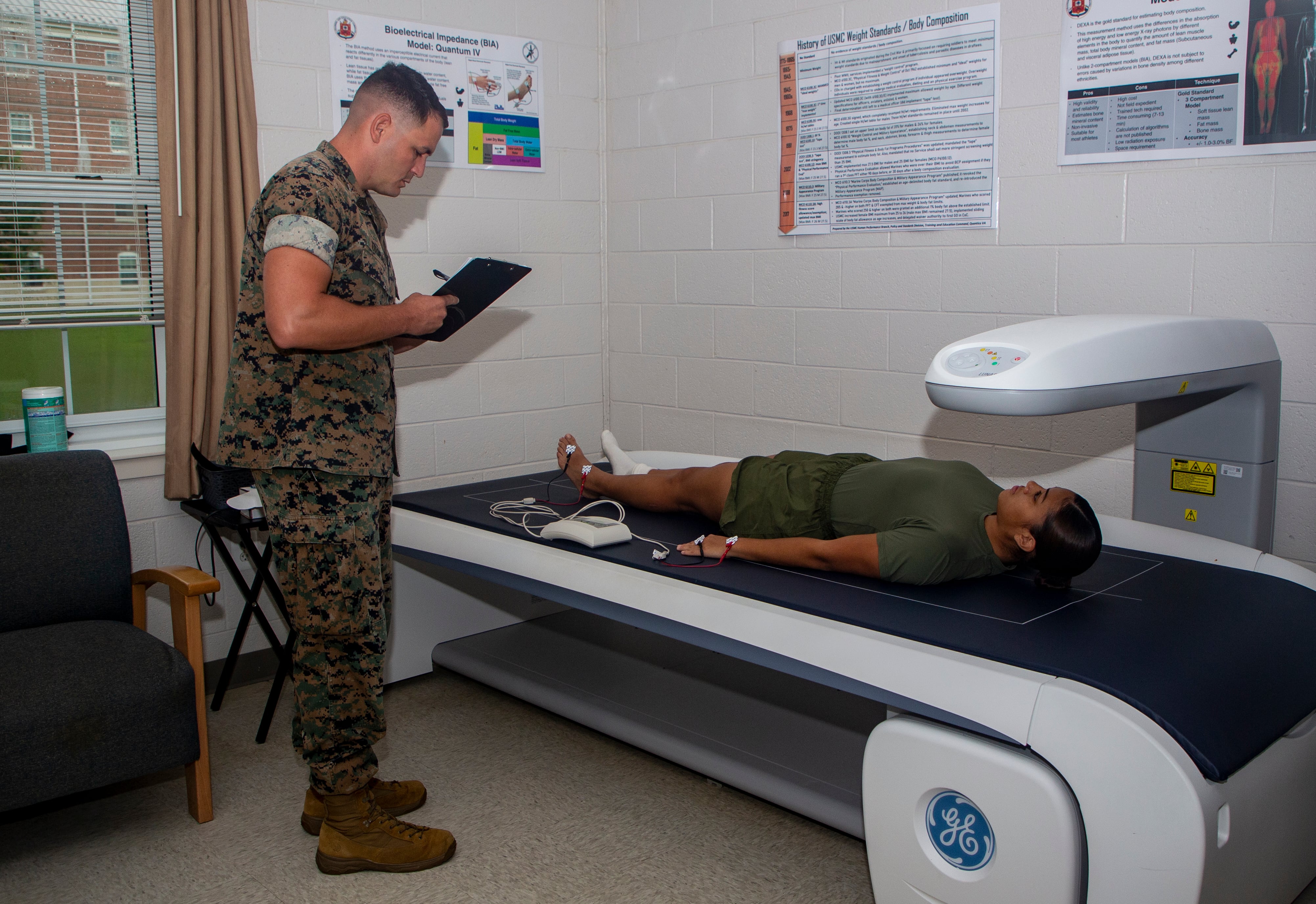Starting the first day of 2023, the Marine Corps implemented a new policy that will revise the way it measures the body composition of its troops.
The Corps announced in August 2022 that it would make the change to be more accurate and conscious of gender-specific differences following the conclusion of a yearlong study.
Marines previously were subject solely to the tape test method, which measures a service member’s neck, waist and other body parts against their height.
Under the new guidelines, however, troops will not be subsequently assigned to the service’s body composition program ― which helps to manage weight or separates them for not meeting standards ― until their body composition also is calculated using the new X-ray scanners and other tech employed in the study.
RELATED

The Marine Corps’ Training and Education Command already began fielding 257 of the machines to prepare for the upcoming requirement, according to a release from the command.
Col. Eric R. Quehl, director of policy and standards for the Marine Corps’ TECOM, told Marine Corps Times during an interview in September what drove the service to explore this switch: “The whole purpose of us looking at this issue, taking a really hard look at it, is ensuring that we do have a good proper balance between performance, health and well-being of the force,” he said. “And of course readiness.”
Maj. Tamara Velding volunteered for the body composition study at The Basic School in Quantico, Virginia, becoming one of more than 2,000 Marines who signed up to participate.
“All of the equipment and technology was really simple,” she told Marine Corps Times in September 2022, saying the whole data collection took about 30 minutes in total. “It didn’t feel invasive or anything like that.”
Under the new guidelines, however, troops will not be subsequently assigned to the service’s body composition program, which helps to manage their weight or separates them for not meeting standards, until their body composition a calculated using the new X-ray scanners and other tech employed in the study.
Jonathan is a staff writer and editor of the Early Bird Brief newsletter for Military Times. Follow him on Twitter @lehrfeld_media





